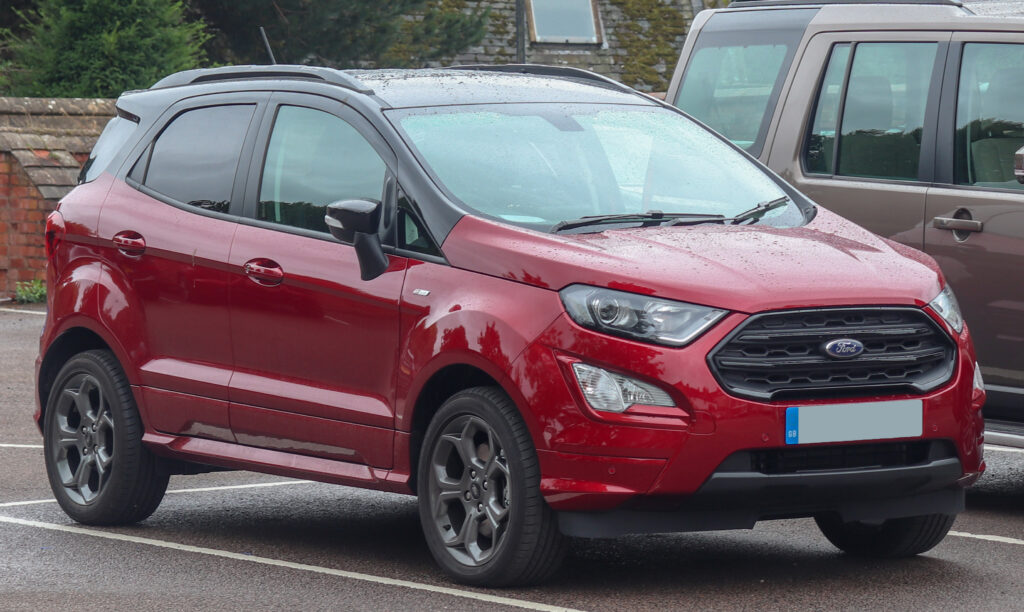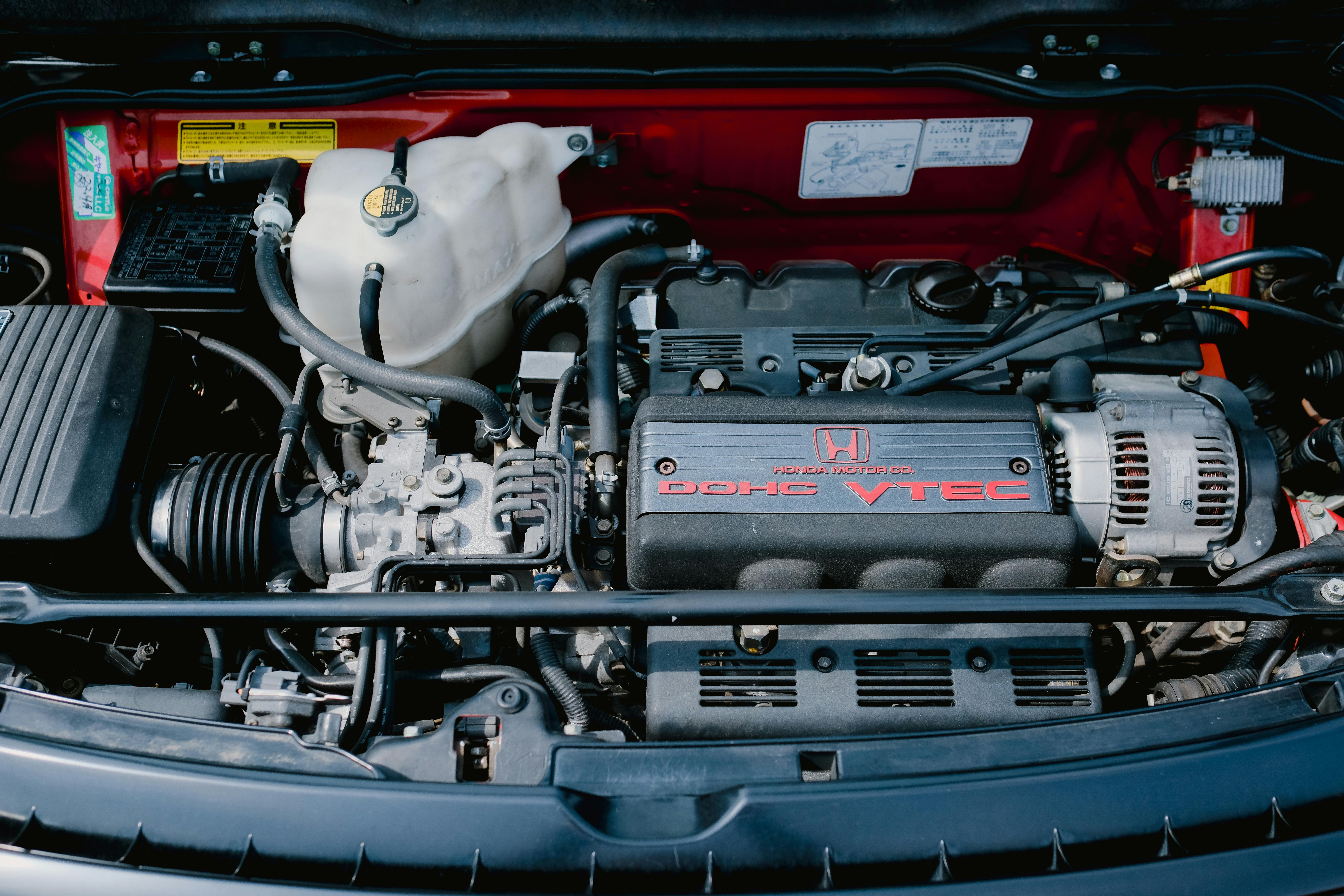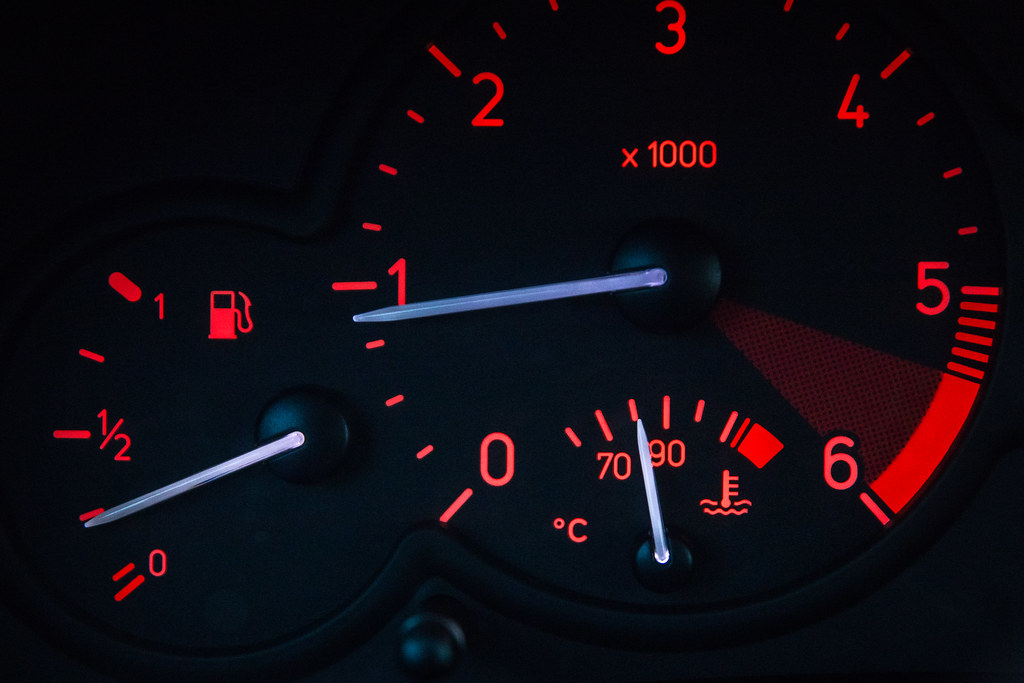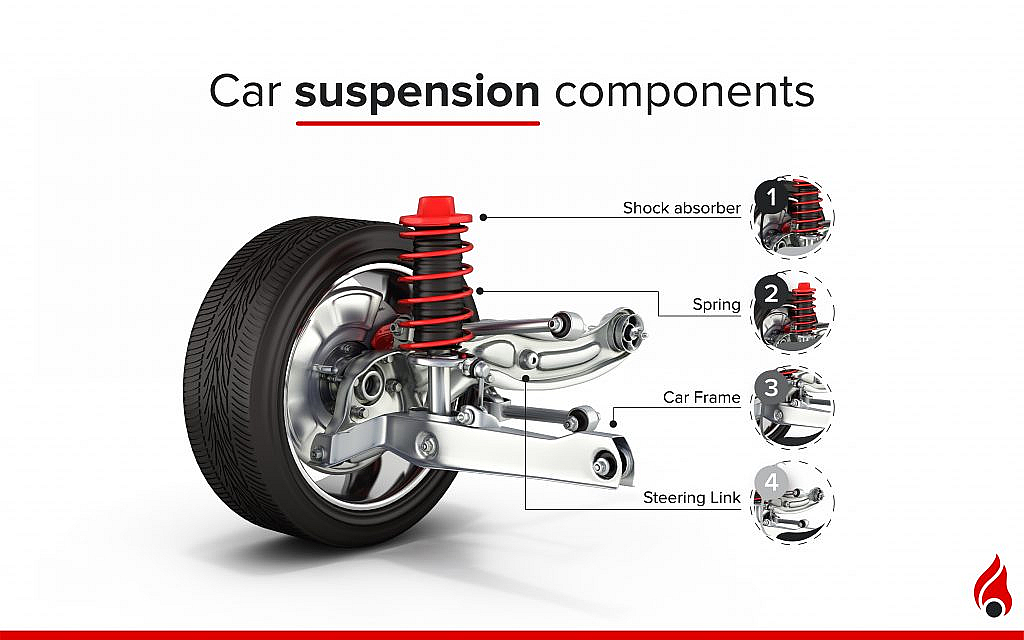
Buying a used car is a smart move for your wallet, often offering significant savings compared to a brand-new vehicle. However, unlike a new car with its pristine history, a used car comes with its own past – a past that could include anything from diligent maintenance to hidden problems. This inherent uncertainty makes the test drive not just an exciting spin, but a crucial investigative mission to ensure you’re not inheriting someone else’s costly headaches.
A comprehensive test drive isn’t just about driving around the block; it’s a multi-faceted evaluation designed to empower you with confidence in your purchase. It’s an essential hands-on part of the car-buying experience, giving you the chance to assess essential features, understand its true condition, and ultimately feel how it fits into your daily life. By taking a diligent, step-by-step approach, you can uncover potential issues and make an informed decision that leads to lasting satisfaction.
To truly make the most of this vital step, you need a strategy. We’ve compiled a detailed checklist of 14 critical things to examine during your used car test drive, broken down into two essential phases. This first section focuses on the static inspection – everything you need to meticulously check before you even put the car in gear. Get ready to put on your detective hat and empower yourself with the knowledge to spot a gem, or confidently walk away from a lemon.

1. **Exterior Bodywork & Rust Check**
Before you even get behind the wheel, take a long, hard look at the vehicle’s exterior. This isn’t just about aesthetics; it’s about uncovering clues to its past. Crouch at each corner and cast your gaze along the lines of the car, looking for any dents, chips, or ripples in the bodywork. These can sometimes be signs of previous accidents or poor repair jobs.
Pay close attention to the panel gaps, which are the spaces between different body parts like doors, fenders, and the hood. If you spot unusually large or inconsistent gaps, it could be another telltale sign that the car has been in an accident and might have had a less-than-perfect repair job. A uniform appearance suggests a car that hasn’t suffered major structural damage.
Rust is another critical area to investigate, as it can escalate into a significant and costly problem. Make sure to check thoroughly in several key areas. Look under the doors and inside the door frames, where water and debris can accumulate.
Inspect the wheel wells and around the arches, which are constantly exposed to road grime and moisture. Don’t forget to examine around the windshield and window seals, as these areas are prone to moisture ingress. Finally, open the trunk and check the hinges, as well as under the carpet for any hidden corrosion. While minor surface rust might be repairable if caught early, widespread or deep rust could make the car unsafe and lead to significant expenses down the line, so be vigilant.
Read more about: Unleash Your Inner Gearhead: 14 Classic Car Restoration Projects Under $10K That Promise High Returns

2. **Glass, Lights & Tires Condition**
With the bodywork thoroughly scrutinized, shift your focus to the car’s glass and lighting components. Inspect the windshield and all other windows for any signs of chips or cracks. Even small chips can quickly develop into much larger cracks over time if left unaddressed, potentially requiring an expensive full glass replacement. It’s a detail that often gets overlooked but can hit your wallet hard.
Next, move on to the vehicle’s lights. Check all headlights, tail lights, turn signals, and fog lights (if present) for any visible damage, including chips or cracks in their lenses. While you’ll confirm their operational status later, this initial visual inspection can reveal signs of impact or neglect. Ensuring all lights are intact is crucial for both safety and passing inspections.
The tires are literally where the rubber meets the road, and they offer a wealth of information about the car’s maintenance and alignment. Inspect how much tread is left on each tire; insufficient tread means you’ll be replacing them soon, which is an immediate cost. You can use a penny in the USA or a 20p coin in the UK to gauge tread depth – if you can see the top of Lincoln’s head (or the outer band of the 20p), the tread is likely too low.
Beyond depth, observe if the tires are wearing evenly across their full width, from one sidewall to the other. Uneven wear can indicate that the car’s alignment is out, which isn’t always an expensive fix but could also hint at a larger underlying suspension issue. Lastly, ideally, all four tires should be the same brand, preferably a well-known one. This consistency is a good indicator that the previous owner didn’t cut corners on maintenance, and remember to check the spare tire if the car includes one.
Read more about: Navigating the Wild: The Best 2025 SUVs Packed with Off-Roading Prowess for American Adventurers

3. **Under the Hood & Engine Bay Health**
Now, it’s time to pop the hood and delve into the engine bay, which is the heart of the vehicle. Begin by taking a general assessment of its overall condition. Is it relatively clean and does it appear to have been well-maintained? Or is it caked in grime and debris, suggesting neglect? Look specifically for signs of rust, particularly in the corners where the windshield is attached, as this can indicate water ingress.
One of the most crucial checks involves the fluids. Locate the window washer fluid, oil dipstick, and battery. Are they easy to get to? Check both the oil level and its color using the dipstick. The oil should be a dark brown hue; if it’s lighter, it may have just been changed, which isn’t necessarily bad but worth noting. If the oil is gritty, however, it could signal a problem brewing within the engine.
Also, inspect the oil filler cap for any mayonnaise-like substance, which is a strong indicator of a head gasket issue – a very costly repair. Beyond the engine oil, ensure that the power steering and brake fluids are both between their minimum and maximum markers. These levels are vital for proper operation of these critical systems.
Next, examine the drive belts; run your hand over them (when the engine is cold, of course) to check for cracks, fraying, or excessive wear. Similarly, feel the hoses leading to the radiator and other areas to ensure the rubber isn’t solid or brittle. Any white staining around hoses can be a red flag for future problems. Finally, inspect the radiator and its coolant reservoir. Modern cars often have sealed cooling systems, meaning they shouldn’t need frequent topping up. Check that the coolant level is between the min and max markers in the reservoir. If the engine is cold, you can carefully open the cap and check the coolant color. While coolant comes in various shades (blue, green, red), it should always look clean, not rusty or milky-colored, as these could indicate system contamination or a more serious engine issue. Also, quickly check the area around the battery terminals for rust, as some batteries are located in the trunk.
Read more about: Navigating the World Solo After 60: 14 Essential Tips for a Safe and Empowering Journey

4. **Interior Space & Seating Comfort**
The interior is where you’ll spend all your time, so comfort and practicality are paramount. Start by opening all doors and sliding into both the front and rear seats. Rate the ease or difficulty of entering and exiting the vehicle. If it’s an SUV with a third row, try climbing into that as well. This exercise helps you determine if the car will be a comfortable fit for you and your regular passengers.
Once inside, focus on the front seats, as you’ll be spending the most time there. Are the seats comfortable? Can you easily recline and adjust the seat to your optimal driving position? Also, ensure the seat belts adjust effectively to accommodate your height. For the rear seats, if it’s a bench seat, check if it splits and folds, which adds valuable cargo flexibility.
Assess the comfort and, crucially, the legroom and headroom. Even if you don’t use the back seats often, having adequate space can make a big difference for occasional passengers or resale value. Beyond comfort, inspect the upholstery for any tears, stains, or general wear. While some wear is expected in an older car, particularly on the driver’s seat, anything more severe could be expensive to fix and detract from the overall interior appeal. This is also an opportune moment to test the seat adjustments and ensure all mechanisms work smoothly.
Read more about: The 2025 Hyundai Palisade for Your Next Long Haul: An Objective Deep Dive into Its Road Trip Capabilities

5. **Cabin Electrics & Storage**
With comfort checked, it’s time to put the car’s various electrical components and storage solutions through their paces. Before you even start the engine (or just turn the key to the accessory position), test all the buttons and switches you can find. This includes rolling all the windows up and down, adjusting the electric mirrors, and checking interior lights. Electrical problems can be incredibly costly and frustrating to diagnose and repair, so thorough testing here is vital.
Consider the practicalities of daily living. Are there enough cup holders, and are they conveniently located? How about storage cubbies for keys, change, and other small items you carry? Is the glove box sufficiently large to hold more than just the owner’s manual? These seemingly small details contribute significantly to the car’s livability and your overall satisfaction.
Don’t forget to look up at the headliner, which is the fabric covering the roof frame. Over time, this fabric can become loose and detach itself, creating an unsightly sag. If the headliner is already sagging, it’s almost certain to worsen, and replacing it can be surprisingly costly. This is a common issue in older vehicles and one you’ll want to factor into your decision.
Read more about: Driving Forward: A Detailed Guide to the 2025 Mid-Cycle Refreshes from Mitsubishi and Ford

6. **Connectivity & Infotainment System**
In today’s connected world, a car’s technological features are nearly as important as its mechanical ones. Now is the time to thoroughly evaluate the infotainment system and connectivity options. Start by checking the number and location of USB ports and power ports. Will they accommodate your devices and charging needs? This is a practical consideration for long drives and daily commutes.
This is also your chance to try out Bluetooth pairing with your smartphone. Test smartphone integration features like Apple CarPlay and Android Auto if they are present. You want to ensure these systems connect seamlessly and function as expected, as glitchy tech can be a constant source of annoyance.
If you’re short on time, don’t hesitate to ask the salesperson to demonstrate the infotainment system’s core functions. Beyond connectivity, evaluate the infotainment system’s overall user-friendliness. Is it intuitive to navigate? Are the menus logical? Turn on the radio or connect your smartphone to the system to appraise the audio quality. While not a deal-breaker for everyone, a good sound system enhances the driving experience. Ensure all buttons, touchscreens, and voice commands respond promptly and accurately.
Read more about: Unleashing the Soul of Driving: What the 2025 Mazda MX-5 Miata Offers True Purists

7. **Climate Control & Odor Assessment**
A comfortable cabin environment is crucial, regardless of the weather outside. So, thoroughly test the climate control system. Turn on both the heating and cooling controls and cycle through the various fan speeds and vent settings. You should feel cold air quickly from the A/C and warm air promptly from the heater. This ensures the HVAC system is functioning correctly, avoiding discomfort in extreme temperatures.
As you operate the climate control, also pay attention to any unusual odors that might emerge from the vents or generally within the cabin. Lingering pungent smells such as smoke or pets can be incredibly tough, if not impossible, to eradicate completely. If these odors bother you, consider how happy you’ll be driving the car day in and day out.
Furthermore, a damp smell could indicate a more serious underlying issue, such as water leaking into the cabin, possibly from window seals or the sunroof. This isn’t just unpleasant; it can lead to rust and other problems. Take a moment to lift the floor mats and check underneath for any signs of moisture or water damage. A clean, neutral-smelling cabin is always the ideal scenario, indicating good maintenance and no hidden water issues.
Now that you’ve meticulously checked the static elements of your prospective used car, it’s time to truly put it through its paces where it belongs: on the road. This isn’t just a joyride; it’s the phase where the car reveals its true mechanical personality, often unveiling issues that a stationary inspection simply can’t. Get ready to engage all your senses, because these dynamic performance checks are paramount to confirming if this vehicle is a reliable companion or a hidden money pit.
Our journey on the road will cover seven crucial aspects, designed to give you a comprehensive understanding of the car’s performance. You’ll be evaluating everything from how it starts and accelerates to how it handles corners and bumps, ensuring that the car doesn’t just look good, but performs flawlessly under real-world conditions. This is your chance to really feel how the car responds, identify any red flags, and ensure it aligns perfectly with your driving needs and expectations.
Read more about: Unlock Your Car’s True Value: 10 Essential Trade-In Tactics to Outsmart Dealerships and Maximize Profit

8. **Starting the Engine & Initial Idle (from cold)**
Before you even think about engaging gear, pay keen attention to how the engine springs to life. Ideally, you want to test drive a vehicle with a cold engine. Some salespeople might try to warm up a car beforehand, which can mask problems, so insist on a cold start if possible. When you first turn the key or press the start button, the engine should turn over smoothly, without excessive cranking or any strange, unsettling noises.
Listen closely for any alarming sounds like knocking, clicking, or grinding right after ignition. These sounds are critical indicators and could signal underlying mechanical problems. A healthy engine should settle into a relatively quiet and steady idle immediately after starting, without any noticeable roughness or excessive vibration. Trust your ears here; unusual noises are often the first sign of trouble.
As the engine idles, take a quick glance at the dashboard. No warning lights should remain illuminated after the initial start-up sequence. Persistent warning lights, especially those related to the engine, oil pressure, or battery, are clear red flags that indicate electrical or engine issues that demand immediate investigation. A clean dashboard is a good sign that the car’s core systems are communicating effectively and are in proper working order.
If you see any white or black smoke from the exhaust during a cold start, pay very close attention. White smoke, especially if it’s thick and persists after a few minutes, could signify a coolant leak, potentially a head gasket issue. Black smoke often points to a fuel-system problem, indicating the engine is running too rich. While a little white, wispy vapor on a chilly day is typically fine and dissipates quickly, anything more substantial warrants serious concern.

9. **Engine Performance and Noise Under Load**
Once the car is running and you begin your drive, the engine’s behavior under various loads is critical. As you accelerate, especially when merging onto a highway or climbing a hill, the car should respond smoothly and consistently without feeling sluggish or hesitating. This is where you evaluate the vehicle’s true performance and power delivery.
Listen intently to the engine sounds as you accelerate through different speed ranges. It should hum along without loud ticking, knocking, or sputtering sounds, which can point to significant mechanical problems. The engine should not feel like it’s struggling or overly strained. A properly functioning used car should feel capable and confident, providing enough power for daily driving scenarios, including safe highway merges.
Pay attention to any vibrations that might transmit through the steering wheel, pedals, or floorboards when the engine is working harder. Excessive vibration under acceleration can indicate engine imbalance, worn engine mounts, or other drivetrain issues that could be costly to rectify. The ideal scenario is a smooth, relatively quiet power delivery that inspires confidence.
Try to find opportunities to drive the car at various speeds, from city streets to highways. This allows you to assess the engine’s consistency. Sometimes, a car might perform adequately at lower speeds but reveal issues like shuddering or a lack of power when pushed harder on the highway. This comprehensive evaluation ensures the engine is robust enough for your typical driving demands.
Read more about: Your Ultimate Guide to Navigating the Used Car Market: Avoid Rip-Offs and Drive Away with Confidence

10. **Transmission Smoothness and Response**
Seamless gear changes are the hallmark of a healthy transmission, whether it’s an automatic or a manual. If you’re test driving an automatic, gear changes should be almost imperceptible; you shouldn’t feel any harsh jerking, delayed shifting, or a sensation of slipping between gears. Any of these symptoms are strong indicators of a transmission issue, which can be one of the most expensive repairs imaginable.
For those evaluating a manual transmission, the clutch should engage smoothly and predictably, without excessive play or a burning smell. The gearshift itself should feel firm and precise, easily slotting into each gear. Vagueness or difficulty in engaging gears suggests potential problems with the clutch, linkage, or even internal transmission components. Test every gear thoroughly, both upshifting and downshifting, to ensure consistent performance.
During your drive, pay attention to the transmission’s behavior when slowing down or coming to a stop. Downshifts should also be smooth and not create any lurching or abrupt sensations. If you notice the car struggling to find the right gear, or if there’s an unusual whine or clunking sound coming from the transmission area, these are serious red flags.
Even in modern automatic transmissions, which are designed to be extremely smooth, any hesitation or abnormality in shifting patterns warrants a closer look. Remember, the transmission is a complex and vital component; any sign of trouble here could lead to significant repair bills down the line. A responsive and smooth transmission is essential for a pleasant and reliable driving experience.
Read more about: The 2025 Chevy Corvette Lineup: A Deep Dive into How the New Models Elevate America’s Favorite Sports Car

11. **Braking Effectiveness and Feel**
The braking system is paramount for safety, so a thorough evaluation during your test drive is non-negotiable. Test the brakes under various conditions: gentle pressure for routine stops and firm pressure for more abrupt situations (when safe to do so). The brake pedal itself should feel firm and consistent underfoot; a spongy or soft pedal can indicate air in the brake lines, master cylinder issues, or worn pads.
When you apply the brakes, the car should stop in a straight line, without pulling noticeably to one side. If it pulls, it could be a sign of unevenly worn brake components, a sticking caliper, or an alignment issue. Listen carefully for any grinding, squealing, or clunking noises during braking. Grinding often means worn pads and rotors, while squealing can indicate worn pads or cheap replacement parts. These noises are not just annoying; they signify components that may need immediate and costly replacement.
Also, pay attention to any pulsations or vibrations felt through the brake pedal or the steering wheel during braking. This sensation typically points to warped brake rotors, which will require replacement. While brake pads and rotors are wear items, significant issues mean immediate costs you need to factor into your purchase decision. Checking the brake feel and response is a fundamental part of assessing the car’s overall condition and safety.
If the used car is an electric vehicle (EV), you’ll also want to evaluate its regenerative braking system. When you lift your foot off the accelerator, the power meter should indicate that power is being sent back to the battery. This feature helps extend range and reduce wear on conventional brakes, so ensuring it functions correctly is an important dynamic check unique to EVs. A strong, consistent brake performance, regardless of the vehicle type, ensures your safety and confidence on the road.
Read more about: The 2025 Hyundai Palisade for Your Next Long Haul: An Objective Deep Dive into Its Road Trip Capabilities

12. **Steering Precision and Road Handling**
The steering system is your direct connection to the road, and its feel can tell you a lot about the car’s underlying health. As you drive, the steering should feel responsive and accurate, giving you a sense of control over the vehicle. There should be no excessive play or looseness in the steering wheel; even small movements should translate directly into a response from the front wheels.
Take the car through a variety of turns, from gentle curves to sharper corners. The vehicle should track predictably and maintain stability without requiring constant corrections to stay in a straight line. If you feel any vibrations or pulling through the steering wheel, particularly when driving straight or making turns, it could indicate issues with wheel balance, alignment, or more serious suspension components.
Listen for any clunks, rattles, or groans when turning the steering wheel or going over bumps. These sounds might signal worn steering components, tie rod ends, or ball joints, which can compromise both handling and safety. The ease of turning and stability at higher speeds are key indicators of a well-maintained steering and suspension system.
Look for opportunities to drive on both smooth and slightly uneven roads to get a true feel for the steering feedback. A healthy steering system provides a firm, connected feel to the road, without being overly heavy or unnaturally light. This tactile feedback is essential for confident and safe driving, allowing you to react precisely to changing road conditions.
Read more about: Unleashing the Soul of Driving: What the 2025 Mazda MX-5 Miata Offers True Purists

13. **Suspension and Ride Comfort**
Beyond handling, the suspension system dictates the car’s ride quality and overall comfort. To properly evaluate this, seek out roads with varied surfaces – some smooth tarmac, some with minor bumps, and perhaps even a patch of slightly rougher terrain if safe and available. This helps you determine how comfortable you and your passengers will be during your daily drives.
As you drive over bumps, potholes, or uneven surfaces, pay close attention to how the suspension absorbs the impact. The ride should feel firm but not harsh, absorbing road imperfections without transmitting excessive jolts or shaking into the cabin. Excessive bouncing, rattling, or a general “loose” feeling can be significant red flags, indicating worn shocks, struts, or suspension bushings. These components are expensive to replace, so any signs of distress should be noted.
Listen for any creaking, clunking, or squeaking noises emanating from the suspension area as the car navigates uneven roads. Such sounds are telltale signs of worn or damaged suspension components that will require attention. A vehicle that bounces around excessively at the slightest bump clearly has suspension issues, compromising both ride quality and safety.
Even if you’re looking at a sports car, a reasonable ride quality is still important for daily usability. A good suspension system strikes a balance between absorbing impacts for comfort and maintaining control for confident handling. Testing the suspension thoroughly helps you gauge the longevity of these critical components and the immediate costs you might incur post-purchase.
Read more about: Unleashing the Soul of Driving: What the 2025 Mazda MX-5 Miata Offers True Purists

14. **Overall Driving Experience & Visibility**
Finally, synthesize all your observations to assess the overall driving experience. How well can you see out of the vehicle from the driver’s seat? Sit in the seat and look forward, to each side, and through the rearview and side mirrors. Take note of any blind spots created by large door pillars or seat headrests, and check the rearview camera as you back up. If present, ensure blind-spot monitoring technology is functional and helpful.
Turn the audio system completely off and actively listen to the noise levels in the cabin. How much wind, tire, and engine noise do you hear, especially when test driving on the highway? While some noise is inevitable, excessive intrusion can be annoying during daily driving and suggests a lack of sound insulation or potential bodywork issues. A car should ideally block out road noise effectively, especially at cruising speeds.
If the car is equipped with advanced driver-assistance technologies like automatic cruise control, lane-keep assist, or traffic-sign recognition, familiarize yourself with how to activate and use them. While you shouldn’t put yourself in dangerous situations to test features like automatic emergency braking, understanding their presence and basic operation is important for your driving safety and convenience. Ensure all these systems respond promptly and accurately if you do test them responsibly.
Beyond specific checks, trust your instincts. Does the car feel solid and well-built, or do you notice rattling windows or loose trim pieces that indicate poor build quality? A comprehensive test drive should last at least 20-30 minutes and include a variety of driving conditions – surface streets, highways, turns, and stops. This extended time allows you to truly feel how the car fits your body, your driving style, and your lifestyle, ensuring that your investment brings lasting satisfaction.
Read more about: Is the 2025 Subaru Forester the Reliable Family Road Trip Companion You Need?
Making the most of your test drive is arguably the most vital step in securing a reliable used car. It’s an empowering opportunity to gather real-world data, transforming a potentially daunting purchase into a confident, informed decision. By diligently following this comprehensive checklist, scrutinizing every detail from static appearance to dynamic performance, you’re not just buying a car; you’re investing in peace of mind. A smart buyer knows that the extra time spent now will save countless headaches and expenses down the road. Happy driving, and may your next used car be a true gem!


